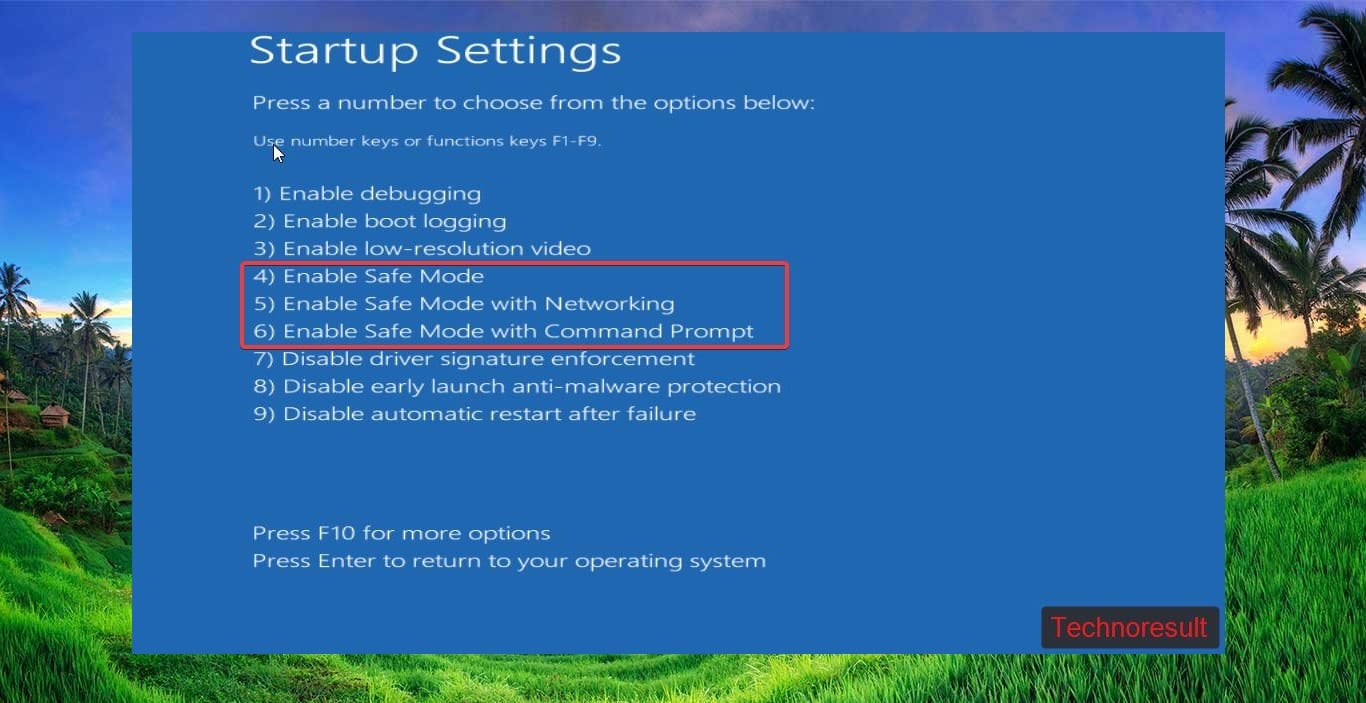
- #BOOT TO SAFE MODE WINDOWS 10 INSTALL#
- #BOOT TO SAFE MODE WINDOWS 10 DRIVERS#
- #BOOT TO SAFE MODE WINDOWS 10 DRIVER#
- #BOOT TO SAFE MODE WINDOWS 10 WINDOWS 10#
For example, your graphics card may be faulty and causing crashes under load. (Note that stability in Safe Mode doesn't necessarily mean it's a hardware problem. However, if the computer continues to crash in Safe Mode, this is often a sign that there's a hardware problem with your computer. See Whether a Crash Occurs: If your computer is unstable normally but works fine in Safe Mode, it's likely that there's a software problem causing your computer to crash.
#BOOT TO SAFE MODE WINDOWS 10 DRIVERS#
If your computer is unstable, you'll have to do this from Safe Mode-the hardware drivers won't interfere and make your computer unstable in Safe Mode.
#BOOT TO SAFE MODE WINDOWS 10 INSTALL#
#BOOT TO SAFE MODE WINDOWS 10 DRIVER#
Uninstall Recently Installed Software: If you recently installed software (such as a hardware driver or a program that includes a driver) and it's causing your computer to blue-screen, you can uninstall that software from the Control Panel.Assuming your computer is unstable and crashing, it may be possible to run System Restore without crashing from Safe Mode. Run System Restore: If your computer was recently working fine but it's now unstable, you can use System Restore to restore its system state to the earlier, known-good configuration.Of course, if you're using Windows Defender in Windows 10, you might be better off performing an offline malware scan. If you don't have an antivirus installed, you should be able to download and install one in Safe Mode. Malware that may be impossible to remove in normal mode-because it's running in the background and interfering with the antivirus-may be removable in Safe Mode. Scan for Malware: Use your antivirus application to scan for malware and remove it in Safe Mode.If you must use the Internet, select 5 or F5 for Safe Mode with Networking.After starting Windows in Safe Mode, you can perform most of the regular system maintenance and troubleshooting tasks to fix your computer: Select 4 or F4 to start the computer in Safe Mode. The computer restarts and enters the Startup Settings menu.At the Advanced Options screen, select Advanced Startup Options.At the Troubleshoot screen, select Advanced Options.At the Choose an option screen, select Troubleshoot.Booting to Safe Mode outside of Windows is achieved in the Windows Recovery Environment (WinRE).įollow these steps to enter Safe Mode from the Windows Recovery Environment (WinRE): Three consecutive failed attempts trigger this action.
#BOOT TO SAFE MODE WINDOWS 10 WINDOWS 10#
If you must use the Internet, select 5 or F5 for Safe Mode with Networking.īoot into Safe Mode from outside of Windows 11 or Windows 10 Windows 11 and Windows 10 automatically boot into the Windows Recovery Environment (WinRE) if Windows fails to start three times in a row.

At the sign-in screen, hold the Shift key down and then click Power > Restart.If you must use the Internet, select 5 or F5 for Safe Mode with Networking.īoot into Safe Mode from the sign-in screen in Windows 11 or Windows 10 After the computer restarts, a list of options appears.



 0 kommentar(er)
0 kommentar(er)
